What is Gouda?
Gouda is a traditional Dutch hard cheese with an interesting history and tradition, preserved today in the same- named town in the Netherlands. Gouda is a city in South Holland, near Rotterdam, but today its name is synonymous with cheese and most people do not even suspect that there is a town like that.
Interestingly, however, the home of this delicacy, cooked traditionally from whole cow's milk, has kept the culture of cheese production alive. In the historic center of the town Gouda, you will find a big cheese market, but is also very close to the old building, which houses the Museum of cheese.
Near this city, there were once many farms specialized in the production of a more established traditional Gouda recipe. Today, however, this high fat product undergoes modification, and modern Gouda can be produced with low content of salt and fat, which is considered a healthy dairy product. Interestingly, even the technology of production of Gouda cheese allows it to be prepared from sheep and goat`s milk, which impress with its pungent and spicy flavor.
Dutch grass that the local cows graze is probably the secret of the magical taste of the original Gouda. In the Netherlands, there are over 20 varieties of grass, and the most common is English fast-growing grass, which is known to be extremely rich in minerals.
How to recognize Gouda?
You'll know fresh Gouda in that it is slightly soft and smooth, often with small holes. With further maturing, the cheese becomes more acute and complex in flavor and hardens. Typical salt crystals appear, similar to Parmigiano. Old Gouda is solid and very suitable for grinding.
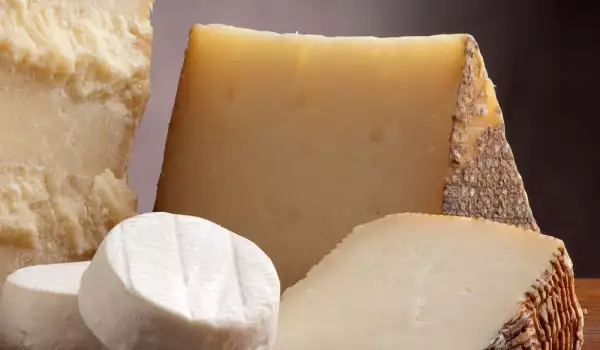
Young Gouda can be attributed to Semi-soft cheeses, being mellow and dark yellow, even orange. This intense color is defined as some brown sugar mixed with butter. This hard cheese is much more brittle and perhaps the most preferred in the market due to its excellent symbiosis between intense aroma and flavor.
Big Gouda cheese has a smooth waxy skin and round shape. When young, in the Dutch cheese you can feel nuances of fruit and all kinds of fine gouda has that typical milk taste and flavor. The more mature it is, the more the fruit fiber is transformed into a flavor reminiscent of nuts.
History of Gouda
The first Gouda cheese is produced in the eponymous town in South Holland and more recently was called Gouda. Historical records have kept knowledge of this type of cheese since 1184, which automatically makes it one of the oldest cheeses.
It is believed that the forerunner of today's Gouda is mastered at nearby farms as early as the 16th century. Two centuries later, the town of Gouda becomes a haven for soft cheeses. In the 13th century the export of Gauda had been quite serious, and later in the Middle Ages, the hard shelled delicacy was very suitable for long sailing trips.
According to historical sources, Gouda and Edammer enjoyed great popularity throughout Europe. It is even claimed that the French King Louis XIV was a faithful fan of Gouda and even had an addiction to the tasty cheese. Through the subsequent ban on imports of cheese in France, French NCRA started to produce similar cheese, named Mimolet.
Throughout history, immigrants to new lands in the U.S. and Australia, took the technology for making Gouda with them and so the cheese is spread on three continents. To this day, when the whole world makes Gouda cheese, there are taste differences due to climate, the food they feed cows, etc.
Today the museum of Gouda is housed in a historic building from 1668 in the classical style and is one of the most important cultural monuments in the city. The building of the scale is even and "Kaas Ekspozium" which is an interactive show of the famous cheese.
Production of Gouda
Production of Gouda in Holland today represents 60% of the whole export of cheese from the country. It is produced mainly in large dairies and rarely in small farms that still make products from unpasteurized cow's milk. As mentioned, round cakes of cheese come with different sizes and ripening takes four weeks to several years.
And while small farm cheese is made traditionally by hand, modern dairies preparation of Gouda is completely automated and manual intervention is not permitted in any technological production stage - putting into molds, pressing, turning, draining’, etc.
Even moving the cheese is made by robotic trucks with impressive size, who move it to the warehouse. The curd out of the machine is divided into portions, then mechanically placed in molds for cakes out of one side of the press and the other goes down the conveyor belt. It should be immersed in brine, where the cheese is salted, gets a crust and acquires a specific taste. 1 kg Gouda can be obtained from 10 liters of milk.
The thin and fairly smooth skin of yellow wax combs hides a dark yellow, almost orange interior with fine holes. The taste of this traditional Dutch cheese varies depending on the duration of ripening. Young Gouda cheese has a soft and velvety texture.
It takes four months to sharpen its taste, but for aged Gouda is deemed to be 10 months. At 4 weeks of ripening, young Gouda occurs. For semi ripe is considered cheese that ages for 8 weeks and matured is at least four months. Matured Gouda is one that has passed at least 10 months of maturing.
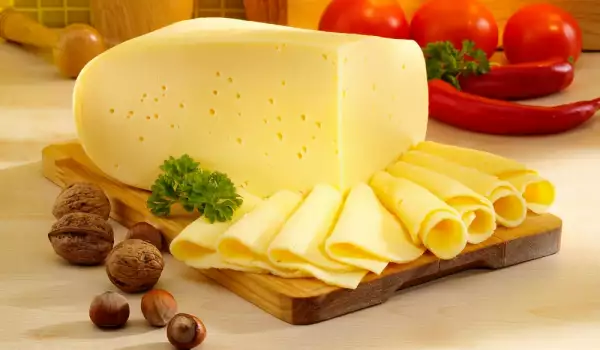
There are Gouda cakes aged 5 years who are a special delicacy. Of course, even three years old cheese now passes as column very mature. In general, Gouda over 18 months is wrapped in black wax, which creates a striking contrast with the deep yellow color of the interior.
The interesting taste of this Dutch cheese is both salty and sweet. There is a fruity aroma and caramel finish. The increasing aging with a complex flavor reaches its final stage in the face of the most mature farmhouse cheeses, which are characterized by a salty flavor and ripe buttery taste that explodes on the palate.
Composition of Gouda
Gouda is a high fat cheese, which contains an average of 40 percent water and 60 percent solids. The percentage of fat in the original Dutch cheese is at least 48%, which is a legal requirement for quality Gouda cheese. The Act of 1911 requires each cake that comes from the Netherlands, to have been hallmarked. The code notes the countryside and the exact location and date of production of the cheese. A portion of 100 g Gouda contains 70% of the daily requirement of calcium for humans. 100 g Gouda also contains: Calories 356, Protein 24.94 g, Carbohydrates 22.2 g, Fat 27.44 g, Sodium 819 mg, Protein 25 g.
Culinary use of Gouda
The characteristics of Gouda assign its generous destiny as a main course cheese. Like other similar cheeses, Gouda goes very well with other fruits and nuts. You are free to grate more mature Gouda on a salad, but to use soft for making sauces and dressings.
Each sandwich prepared with the addition of this Dutch cheese comes with guaranteed flavor. You can add Gouda sauce on the pasta you prepare or directly to grate on top, put it in lasagna, or where you believe the taste is right.
The smell of Gouda perfectly combines with fruity white wine with a light to medium light body - Chardonnay, Riesling, Pinot Grigio. For older and harder cheese, a good choice is Vintage Port.
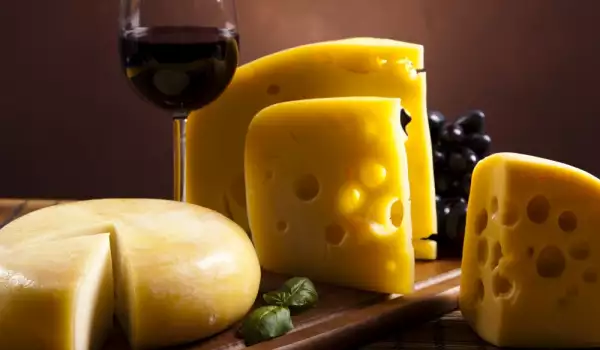
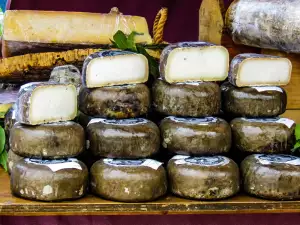
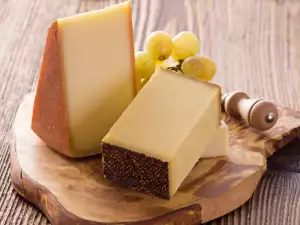

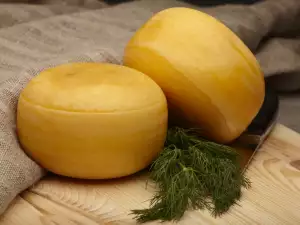




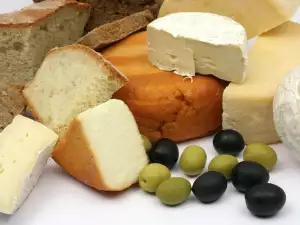
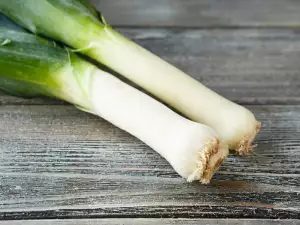
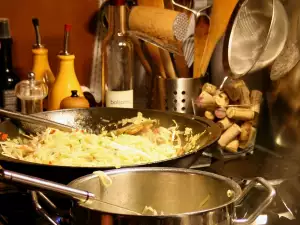

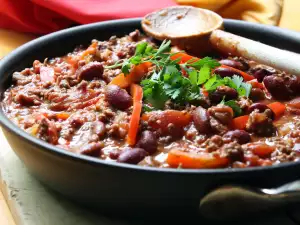






Comments